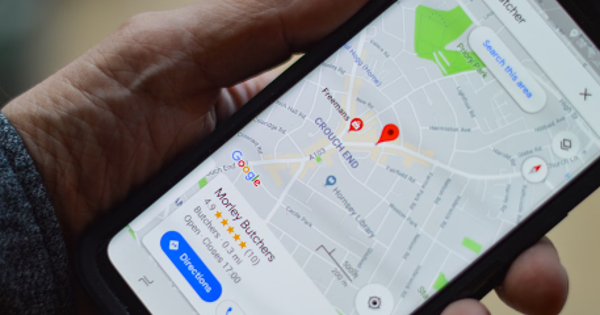5/22/2024
As a small business owner, you know how important it is to reach your local audience. Whether you run a cozy cafe, a boutique store, or a family-owned service business, attracting customers from your neighborhood can be a game-changer. That's where Local SEO (Search Engine Optimization) comes into play. In this article, we'll explore the key insights into Local SEO ranking factors and how you can use SEO tools for business owners to boost your online visibility and attract more local customers.
Key Takeaways
- Understanding Local SEO
- Key Local SEO Ranking Factors
- Examples of Successful Local SEO Strategies
- Local SEO and Google Maps
- Local SEO and Voice Search
- Local Content Marketing
- Measuring and Monitoring Local SEO Performance
- FAQs
- Conclusion
Understanding Local SEO

Black words on the green background - Pexels - Eva Bronzini
Local SEO is a branch of SEO that focuses on optimizing your online presence to attract local customers searching for products and services in their vicinity. It's about making your business more visible to people searching within a specific geographic area, often with the intent of making an immediate purchase or visit.
Why is Local SEO Important for Small Businesses?
For small businesses, especially those with brick-and-mortar locations, local customers are the lifeblood of their success. Local SEO helps you target and attract these customers effectively. When your business appears in local search results, you increase foot traffic to your physical store and generate more leads, leading to higher conversion rates.
Key Local SEO Ranking Factors

Black Tablet Display Google Browser on Screen - Pexels - PhotoMIX Company
In this section, we
explore the key factors influencing your business's position in local
search results, offering insights and strategies for enhanced online
presence within your community.
Google My Business (GMB) Optimization
Google My Business is a powerful tool for local businesses to manage their online presence. Optimizing your GMB listing can significantly impact your local search rankings.
- Accurate Business Information: Ensure that your business name, address, and phone number (NAP) are consistent across all platforms, including your website, GMB, and local directories.
- Categories and Attributes: Choose the most relevant business categories and attributes in your GMB profile. This helps Google understand your business and display it for relevant local searches.
- Business Description: Craft a compelling and informative business description that includes relevant keywords related to your products or services.
Local Citations and Online Directories
Local citations are online mentions of your business NAP on other websites and directories. These citations contribute to your local SEO efforts.
- Consistent Citations: Ensure that your NAP information is accurate and consistent across all local directories.
- Relevancy: List your business in directories that are relevant to your industry or location. Quality citations from authoritative directories carry more weight in local search rankings.
Online Reviews and Reputation

Simple Workspace at Home - Pexels - Mikael Blomkvist
Online reviews play a significant role in influencing potential customers. Positive reviews can boost your credibility and attract more customers, while negative reviews can deter them.
- Encourage Reviews: Ask satisfied customers to leave reviews on your GMB listing and other review platforms. The more positive reviews you have, the better your local search rankings.
- Respond to Reviews: Engage with both positive and negative reviews by responding professionally and courteously. Addressing negative feedback shows that you care about customer satisfaction.
Local Keyword Optimization
Keyword optimization remains fundamental to SEO, and for local businesses, targeting location-specific keywords is essential.
- Keyword Research: Identify relevant keywords that local customers are using to find businesses like yours. Use SEO tools for business owners to discover relevant local keywords.
- On-Page Optimization: Incorporate local keywords naturally into your website's content, meta titles, and meta descriptions to signal to search engines your local relevance.
Mobile Optimization

Table with mobile page design project - Unsplash - UX Store
With the increasing use of mobile devices, optimizing your website for mobile is crucial for local SEO success.
- Responsive Design: Ensure your website has a responsive design that adapts to various screen sizes and devices, providing a seamless user experience.
- Fast Loading Speed: Optimize images, enable browser caching, and minimize code to improve your website's loading speed on mobile devices. You can use SEO tools for business owners to check the speed of your website.
Local Backlinks
Backlinks, or inbound links from other websites, are an essential aspect of SEO. For local businesses, having local backlinks is particularly beneficial.
- Local Partnerships: Collaborate with other local businesses, organizations, or charities to earn local backlinks. This can be through sponsorships, events, or co-marketing efforts.
- Local Content: Create valuable and shareable content that focuses on local topics or events. This can attract links from other local websites and improve your local authority.

Person's Hand on White Paper - Pexels - Kindel Media
Here we delve into real-world examples of businesses that
have strategically leveraged Local SEO to drive foot traffic, enhance
visibility, and outshine competitors in their local markets.
Joe's Coffee House
Strategy: Joe's Coffee House is a cozy coffee shop in a busy downtown area. They implemented a robust Local SEO strategy to attract more foot traffic and compete with larger chain coffee shops.
Results:
- Optimized their GMB profile with accurate business information, enticing descriptions, and attractive photos.
- Encouraged customers to leave positive reviews, resulting in a 20% increase in GMB reviews over six months.
- Collaborated with nearby businesses to earn local backlinks and co-hosted community events to boost local visibility.
Sarah's Boutique
Strategy: Sarah's Boutique is a local fashion store that struggled to stand out in a competitive market. They decided to prioritize Local SEO to attract nearby shoppers.
Results:
- Conducted keyword research to identify popular local fashion-related search terms and incorporated them into their website's product descriptions and blog posts.
- Actively engaged with customers on social media and encouraged them to share their purchases and experiences, leading to increased online visibility.
- Participated in local fashion events and collaborated with local fashion bloggers, earning valuable local backlinks and boosting their reputation.
Local SEO and Google Maps

person holding black smartphone - Unsplash - henry perks
Today, many consumers rely on Google Maps to find local businesses, check operating hours, and get directions. Having a strong presence on Google Maps can significantly boost your local SEO efforts and attract more foot traffic to your physical location.
Claim and Verify Your Google My Business Listing
If you haven't already done so, claim and verify your Google My Business (GMB) listing. This process involves proving to Google that you are the legitimate owner or representative of your business. By claiming your listing, you gain control over the information displayed on Google Maps and Search.
To verify your GMB listing, Google will typically send you a postcard with a verification code to your business address. Once you receive the postcard, enter the code in your GMB dashboard to complete the verification process.
Optimize Your Google My Business Profile
A well-optimized GMB profile can significantly improve your visibility on Google Maps. Here's how you can do it:
- Complete Business Information: Provide accurate and up-to-date information about your business, including your name, address, phone number, website, and operating hours. Ensure that this information matches the details on your website and other online directories.
- Select Relevant Categories: Choose the most relevant business categories that describe your products or services. This helps Google understand your business and display it for relevant local searches.
- Add Photos and Videos: Upload high-quality photos and videos that showcase your business, products, services, and team. Visual content can engage potential customers and entice them to visit your store.
- Collect and Respond to Reviews: Encourage customers to leave reviews on your GMB listing. Positive reviews can improve your local SEO rankings and attract more customers. Be sure to respond to reviews, both positive and negative, to show that you value customer feedback.
Local SEO and Voice Search

Joyful young woman phoning on street in evening - Pexels - Andrea Piacquadio
With the rise of voice-activated virtual assistants like Siri, Alexa, and Google Assistant, voice search is becoming increasingly popular. Many voice searches are location-based, making local SEO crucial for businesses seeking to capitalize on this trend.
To optimize for voice search:
- Long-Tail Keywords: Optimize your content for long-tail keywords that reflect natural language and conversational queries. Think about the questions your customers may ask when searching for products or services in your area. There are plenty of SEO tools for business owners that can help you identify long tail keywords.
- FAQ Page: Create a frequently asked questions (FAQ) page on your website that addresses common queries related to your business and location. Voice search queries often resemble questions, and having an informative FAQ page can help you rank for these queries.
Local Citations and NAP Consistency
Local citations, as mentioned earlier, are mentions of your business NAP (Name, Address, Phone number) on other websites and directories. These citations help establish the credibility and relevance of your business for local searches.
To ensure NAP consistency:
- Audit Local Citations: Conduct a thorough audit of your business citations to identify any inconsistencies in NAP information. Update incorrect or outdated listings to maintain consistency across all platforms.
- Utilize Local Directories: List your business on popular local directories. Ensure that your NAP information is accurate and consistent on these platforms.
Local Content Marketing

A finger is pointing content marketing letters - Pixabay - DiggityMarketing
Creating valuable and location-specific content is an excellent way to attract local customers and boost your local SEO efforts.
- Local Blog Posts: Write blog posts that are relevant to your local audience. This could include local event coverage, guides to local attractions, or news related to your industry in your area.
- Location Pages: If you have multiple physical locations, create individual location pages on your website. Each page should provide specific details about the location, such as address, operating hours, and unique offerings.
Measuring and Monitoring Local SEO Performance

Cutout paper illustration of human hand with magnifier and chart - Pexels - Monstera Production
Implementing a robust Local SEO strategy is just the beginning. To ensure ongoing success, you need to measure and monitor your performance regularly.
Google My Business Insights
Google My Business provides valuable insights into how customers find and interact with your business listing. Use GMB Insights to track the following metrics:
- Search Queries: See the search terms customers used to find your business on Google Maps and Search.
- Customer Actions: Monitor the actions customers take on your GMB listing, such as visiting your website, requesting directions, or calling your business.
- Photo Views: Keep an eye on how many views your photos receive. Engaging and visually appealing photos can attract more customers.
Website Analytics
Your website analytics can provide valuable data on how visitors interact with your website. Key metrics to track include:
- Organic Traffic: Measure the amount of traffic your website receives from local organic searches.
- Bounce Rate: Monitor the percentage of visitors who leave your website after viewing only one page. A high bounce rate may indicate issues with your website's user experience.
- Conversion Rate: Track the percentage of visitors who complete a desired action, such as making a purchase or filling out a contact form.
Conclusion
For small business owners, local SEO is a powerful tool to attract local customers, increase foot traffic, and grow your business. By optimizing your Google My Business listing, targeting location-specific keywords, building local citations, and creating valuable local content, you can improve your local search rankings and stand out in your local market.
Remember, local SEO is an ongoing process that requires consistent effort and monitoring. Stay up-to-date with the latest local SEO trends and adapt your strategies accordingly. By prioritizing the needs of your local customers and providing an exceptional online experience, your small business can thrive on the internet. Happy optimizing!
Frequently Asked Questions
Local SEO focuses on optimizing online presence to attract local customers, crucial for small businesses, especially those with physical locations, as it increases visibility, foot traffic, and leads.
Key factors include Google My Business (GMB) Optimization, Local Citations and Online Directories, Online Reviews and Reputation, Local Keyword Optimization, Mobile Optimization, and Local Backlinks.
GMB optimization involves ensuring accurate business information, relevant categories, and an enticing business description, significantly impacting local search rankings.
Local citations, mentions of business NAP on other websites, contribute to local SEO efforts by providing consistent and relevant information across directories.
Positive reviews boost credibility and attract customers. Encourage reviews and respond professionally to both positive and negative feedback to show customer care.
Businesses can identify local keywords through research and incorporate them naturally into website content, meta titles, and meta descriptions for effective on-page optimization.
Mobile optimization ensures a seamless user experience on various devices, including responsive design and fast loading speed, enhancing local SEO success.
Businesses can earn local backlinks through local partnerships, collaborations, events, and creating shareable local content to improve local authority.
Successful examples include Joe's Coffee House, which optimized GMB profile, increased positive reviews, and collaborated for local backlinks, and Sarah's Boutique, which conducted keyword research, engaged with customers on social media, and participated in local events for increased visibility.
Businesses can use Google My Business Insights to track search queries, customer actions, and photo views. Website analytics can measure organic traffic, bounce rate, and conversion rate.

